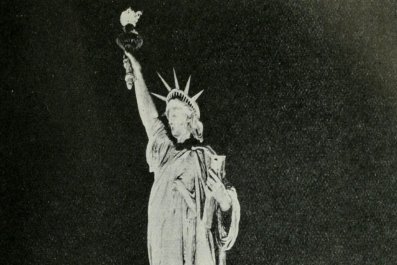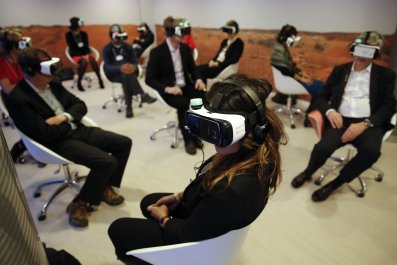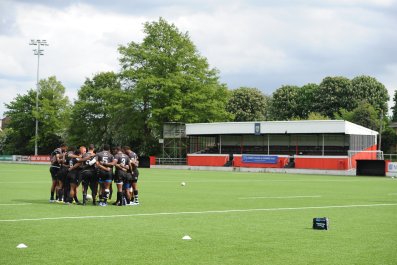Updated | Identifying effective cancer treatments is never an easy process, and even drugs that make it to the market are rarely effective on every patient. As cancer treatment becomes more personalized, clinicians have come to realize how biological factors beyond a patient's control—especially gender—can determine treatment outcome. Oncologists often know a treatment may fail, not based on mountains of study, but through their own frustration that comes from treating patients.
This is because studies on blockbuster cancer drugs rarely reflect the population of patients who fall ill with the disease they seek to cure. This is a challenge for many patient populations but an overwhelming amount of research shows females suffer unjustly from clinical trial inequality.
"Except for the cancers for male patients and female patients—prostate cancer is obviously all male and breast cancer is predominantly female—we don't pay that much attention to the gender of our models or how that would affect treatment outcomes," says Dr. Faye Johnson of the University of Texas MD Anderson Cancer Center. " But research suggests that we really should."
Women Underrepresented
Of course, an uneven distribution of male and female clinical trial patients isn't inherently a problem. Experts all agree that studies should reflect the cancer's prevalence in the general population, with the male/female split of participants proportionally equal to who actually gets the disease. But more often than not, this isn't the case. An analysis of hundreds of studies on common cancers published in the journal Cancer, involving millions of patients, suggests women are underrepresented in three out of every four cancer studies. Obviously, they make up nearly 100 percent of studies related to female-specific forms of the disease, such as breast and cervical cancer, but when it comes to common cancers that can potentially affect anyone, gender bias is a problem. For example, 45 percent of lung cancers are diagnosed in women, but only about 31 percent of lung cancer study participants are actually female.
Worse, this inequality actually comes into play much earlier in the drug discovery process—well before an experimental therapy is ready to be tested out on ailing patients. Gender discrimination isn't only a problem in clinics, it's an issue in petri dishes.
Before researchers test out any cancer drug on humans, the compound is first assessed in a lab. Typically, the cancer cell lines used in this early stage of research are classified in terms of their specific type of cancer. Factors such as sex, age and ethnicity of the person who provided the specimen is rarely considered.
Through huge advances in molecular biology and genetics, scientists have come to observe that all cells in the human body—not just ones involved in reproductive systems—have different characteristics based on sex. From fertilization on, males and females are differentiated by sex chromosomes; females have two X chromosomes and males have one X and one Y chromosome. That pair accounts for about 5 percent of the approximately 20,000 genes that make up the human genome. This ultimately means all cells do have a sex, including cancer cells.
These cellular-level sex distinctions affect physiological function, and also play a role in the pathology of many diseases, including cancer. This, in turn, influences treatment outcomes. "Women's response to an injury, to something foreign, to even any kind of inflammatory response that occurs involves a completely different chemical pathway than what occurs in men," says Doris Taylor, director of regenerative medicine research at the Texas Heart Institute. "And yet, we don't even think about any of that when we start trying to put together outcomes and clinical and preclinical studies."
Cancer Genome Atlas
Oncologists have known for some time that a patient's sex can influence cancer outcomes but we still don't know exactly why. Despite the scientific community's awareness of the problem, some of the most significant cancer research occurring today remains influenced by these biases.
In 2006, the National Cancer Institute and the National Human Genome Research Institute began a multi-million dollar landmark project known as The Cancer Genome Atlas (TCGA). Its mission was to sequence DNA of 33 different types of common and rare cancers, from more than 10,000 tissue samples from individual patients. The goal of TCGA is to identify common genetic factors that characterize certain types of cancer and find treatments based on these specific genetic profiles. The problem, however, is that genetic profiles of the disease don't just differ from cancer to cancer, they also differ between men and women (as well as age, race/ethnicity and stage of the disease).
TCGA has undoubtedly helped to further the goals of making cancer treatment more precise. However, though the total number of tissue samples used in the project are nearly evenly split between the sexes, the same is not true for the gender split of specific cancer cell lines. For example, the number of tissue samples from men sequenced for non-small cell lung cancer far outnumber ones taken from women—373 versus 131.
Dr. Jean Zenklusen, director of TCGA, says when the program began, researchers were tasked with collecting a huge number of tissue samples—often from 500 to 1,000 specimens (or more) from individual patients for each cancer type. Because the target number was so high, Zenklusen says TCGA was forced to rely on "samples of convenience," meaning tissue was collected from a homogenous group of patients, often at the exclusion of women and racial minorities.
Ironically, examining TCGA's data has helped affirm that sex differences found in cancer cells are significant and important, and researchers are perhaps missing an opportunity to enable better and more personalized treatment options. Dr. Han Liang, a bioinformatician at MD Anderson, recently conducted a large-scale analysis of TCGA data on 13 types of cancer to compare the different genetic attributes of male and female tissue samples. Specifically, he and his team looked at certain genes already known to be significant in cancer treatment. They found more than half those genes (53 percent) also happen to have sex-biased signatures. These cancer biomarkers are useful to oncologists for making an accurate diagnosis. These are also 86 cancer drugs already approved by the U.S. Food and Drug Administration and routinely used in clinical practice that target the genes related to sex-based signatures.
However, the researchers found that not all cancer types had a significant number of sex-based signatures. In particular, Liang and his team found cancers of the thyroid, head and neck, lungs, liver, kidneys and bladder had the the highest number of biomarkers in genes already known to be associated with whether a person is male or female. These findings appeared to back up anecdotal evidence observed by many doctors who treat cancer. For example, a certain drug given to patients with a type of non-small cell lung cancer targets the gene EGFR. Many oncologists have observed that female patients who take the drug typically have better outcomes than males, which is likely due to EGFR's sex-based distinctions.
Zenklusen says that when these findings were published in May in the journal Cancer Cell , the oncology community reacted with a collective "No duh!" But all agreed that simply knowing isn't enough. "This research is proof that the anecdotal differences are true," he says. However, he added that the study is not yet enough to "unravel the ball of yarn."
Balanced Trials
In the age of cancer genomics and precision medicine, scientists have put most of their emphasis on identifying "driver mutations," essentially the "misspelling" of certain genes that cause cancer cells to multiply. But there are a myriad other genetic influences on disease pathology, such as deletions, duplications and inversions of genes.
But having better patient outcomes will only happen when trials are balanced fairly. In 1993, U.S. Congress passed the National Institutes of Health Revitalization Act, which draws up guidelines that are meant to encourage researchers to form diverse study cohorts. Scientists applying for federally funded grants are required to articulate the demographics of the study pool they plan to recruit. In cases where there likely won't be women, minorities and children involved, the researchers need to provide a reason why enrolling a diverse pool of patients would end up being problematic for the study. It turns out these policies appear to boost women's representation in clinical trials. A study conducted by the American Cancer Society, published in CANCER, found trials that relied on government funding tended to have a higher representation of women than those operated with money from the private sector—41.3 percent versus 36.9 percent.
Zenklusen says NCI has also started to recruit female and racial/ethnic minority patients to provide more tissue samples for TCGA. Zenklusen and others spend time on the ground recruiting people at local churches to diversify tissue samples."We're trying to find individuals from different minorities to make the TCGA look more like the U.S. population," he says.
Correction: An earlier version of this story incorrectly referred to The Cancer Genome Atlas (TCGA) as TCGP.






















